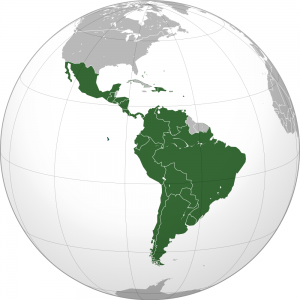By Jaclyn Lopez
LatinaLista
After finding that the international trade of wild plants and animals was leading to their extinction, countries throughout the globe entered into the Convention on International Trade in Endangered Species in 1975. CITES, as it is more commonly known, compliments domestic efforts to eliminate the threat of overexploitation through measures ranging from export and import permit recording to outright bans in trade.
Delegates from 176 nations are meeting this month in Bangkok, Thailand for the 16th Conference of the Parties, a meeting that occurs approximately every three years where countries propose species for various levels of protection under CITES.
Already this COP, countries have agreed to impose measures to protect dozens of imperiled species.

Over thirty species of hard and soft shell freshwater turtles will now receive protections under CITES. Freshwater turtles are being driven toward extinction due to high consumer demand as exotic pets, meat in soups, and the key ingredient in love potions and traditional remedies for a variety of maladies.
For example, the beautiful diamondback terrapin, native to east coast salt marshes, is collected for consumption and the pet trade, is lost accidentally to crab pots, and has suffered 75 percent decline. The diamondback terrapin is now listed under Appendix II of CITES, trade will now only be permitted where it has been determined that it will not be detrimental to the species.
Also recommended for Appendix II are the porbeagle, oceanic whitetip, and three kinds of hammerhead shark.
These species are heavily fished for Asian markets and are also the victims of incidental capture in other fisheries. If formalized by vote later this week, these sharks, along with two species of manta rays, will enjoy a new system that helps ensure sustainable and legal trade.
Meanwhile, efforts to ban trade in polar bear parts under CITES were unsuccessful, even though a U.S. federal circuit court recently upheld the U.S. Fish and Wildlife Service’s determination that polar bears are threatened with extinction and deserve the protection of the Endangered Species Act.
Enforcement of CITES and penalties for trade conducted in violation of CITES vary country by country. While not 100 percent effective in preventing illegal trade of listed species, CITES has been largely successful in drawing attention to the plight of species losing the battle against overexploitation.
The Conference wraps up later this week, and some topics for discussion include strengthening CITES implementation in member countries. Stay tuned.
Jaclyn Lopez is a staff attorney with the Center for Biological Diversity. This article reflects her opinions and does not represent those of the Center.




